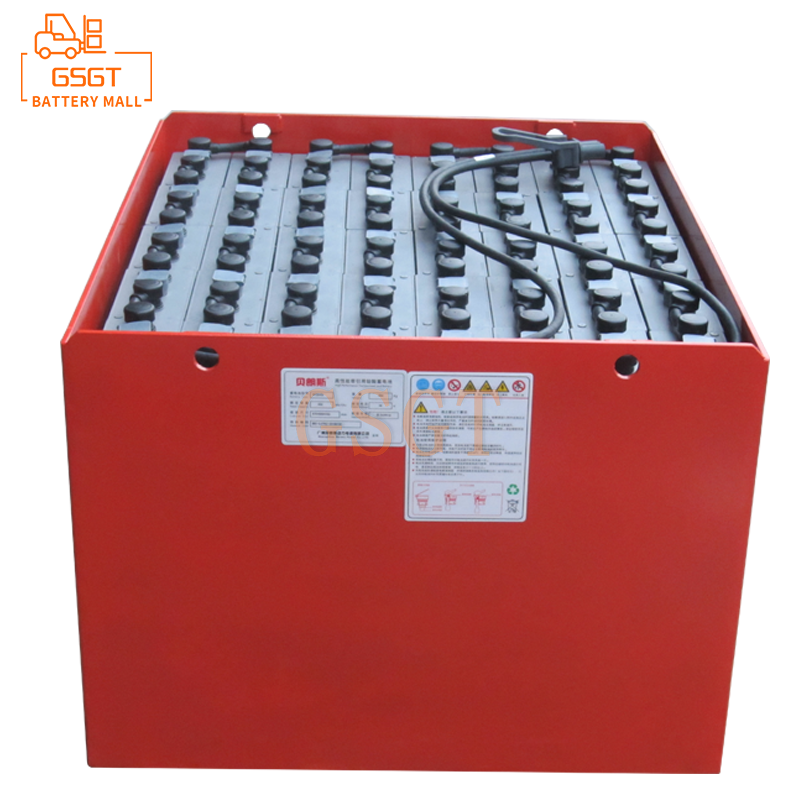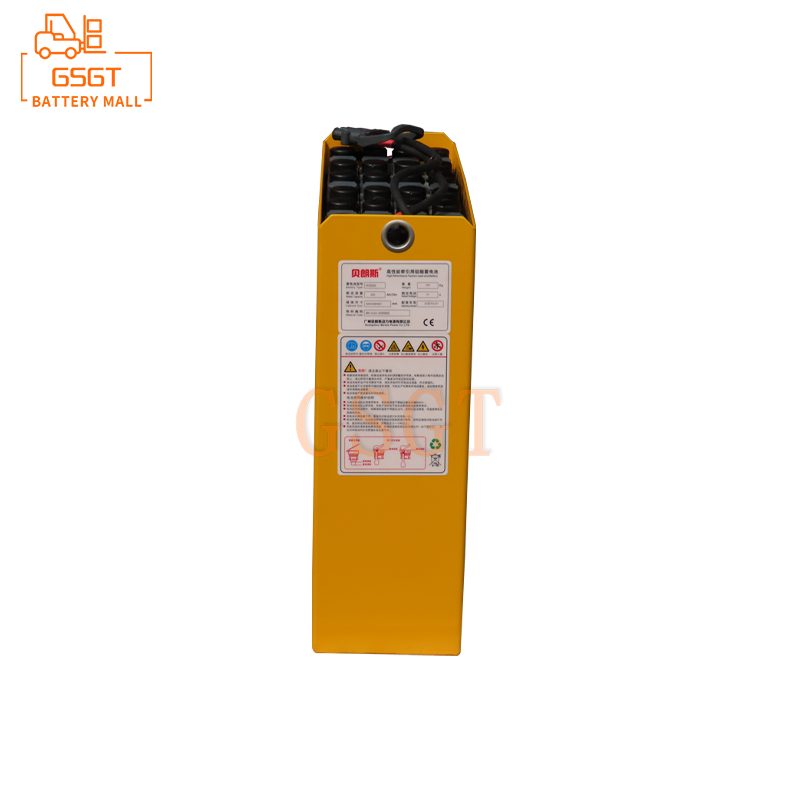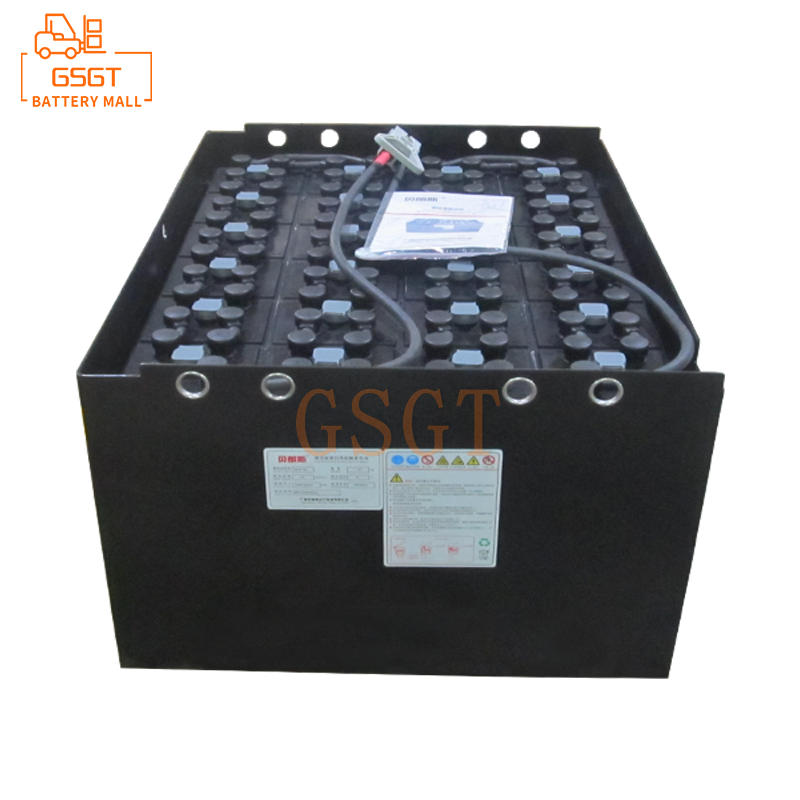Time:2025-05-06 12:16:51
Browse:529
In the modern logistics and warehousing industry, forklifts, as core handling equipment, the selection of their power sources is of vital importance. Forklift lead-acid batteries, with their unique advantages, have occupied an important position in the logistics and warehousing field and have become the preferred power source for many enterprises. This article will delve deeply into the application of lead-acid batteries for forklifts in the logistics and warehousing industry, analyzing their advantages, challenges, and future development trends.
1. The Current Application Status of Forklift Lead-acid Batteries in the Logistics and Warehousing Industry
The demand for forklifts in the logistics and warehousing industry is extremely huge. Whether it is a large logistics hub or a small warehouse, forklifts undertake key tasks such as goods handling and loading/unloading. Lead-acid batteries, as one of the main power sources for forklifts, have a wide range of applications. From ordinary pallet trucks to large counterbalanced forklifts, lead-acid batteries can provide stable power support for them.
In daily warehousing operations, forklifts need to start, stop, accelerate and decelerate frequently to complete the task of goods handling. Lead-acid batteries can adapt to such frequent changes in working conditions, providing sufficient instantaneous current to ensure the efficient operation of forklifts. For instance, in e-commerce warehouses, the volume of order processing is huge. Forklifts need to quickly move goods from the storage area to the sorting area. The stable performance of lead-acid batteries ensures that forklifts can work continuously in high-intensity working environments, meeting the high requirements of the e-commerce industry for logistics efficiency.
In addition, in some indoor storage environments with high requirements for noise and emissions, electric forklifts paired with lead-acid batteries have become an ideal choice. Lead-acid batteries do not produce exhaust emissions during operation and have low noise, thus not polluting the storage environment and creating a relatively comfortable and healthy working environment for employees.
2. Advantages of Forklift Lead-Acid Batteries in the Logistics and Warehousing Industry
(1) Cost advantage
Low initial purchase cost: Compared with other types of batteries, such as lithium batteries, the initial purchase cost of lead-acid batteries is significantly lower. For some small and medium-sized logistics and warehousing enterprises with limited capital budgets, choosing lead-acid batteries as the power source for forklifts can effectively reduce the initial investment cost while ensuring the normal operation of the equipment. For instance, the price of an electric forklift equipped with a lead-acid battery may be tens of thousands of yuan lower than that of the same model with a lithium battery, which represents a considerable cost savings for enterprises.
The maintenance cost is relatively low: The maintenance technology of lead-acid batteries is mature and the maintenance process is relatively simple. Enterprises only need to regularly check the electrolyte level and specific gravity, and carry out necessary charging and cleaning work. Moreover, the price of maintenance parts for lead-acid batteries is relatively low, and the maintenance cost is also within an affordable range when a fault occurs. In contrast, the maintenance of lithium batteries requires more professional techniques and equipment, and the maintenance cost is relatively high.
(2) Performance advantages
Stable power output: Lead-acid batteries can provide stable voltage and current during the operation of forklifts, ensuring smooth power output for the forklifts. Whether the forklift is climbing a slope fully loaded with goods or performing rapid cargo loading and unloading operations, lead-acid batteries can continuously provide sufficient power for the forklift, ensuring its working efficiency and stability. This stable power output characteristic enables the forklift to operate reliably in various complex logistics and warehousing operation environments.
Excellent low-temperature performance: In some logistics and warehousing sites in cold regions, the ambient temperature is relatively low, which poses a severe test to the performance of batteries. Lead-acid batteries can still maintain good performance in low-temperature environments. Although their capacity will decline, compared with some other battery types, the decline is relatively small. This enables forklifts equipped with lead-acid batteries to operate normally in low-temperature environments, meeting the demands of logistics and warehousing operations.
(3) Safety advantages
Mature technology, safe and reliable: Lead-acid batteries have a development history of over a hundred years, and their production and manufacturing technologies as well as application technologies are all very mature. After long-term practical tests, lead-acid batteries have a relatively high level of safety under normal use and maintenance. For instance, its internal structure is reasonably designed, which can effectively prevent electrolyte leakage and avoid safety accidents caused by electrolyte leakage.
Less likely to cause serious accidents such as fire and explosion: Compared with other batteries like lithium batteries, lead-acid batteries are less likely to cause serious safety accidents such as fire and explosion during use. Due to their chemical properties, lithium batteries may trigger intense chemical reactions when subjected to abnormal conditions such as overcharging, overdischarging, and short circuits, leading to fires and explosions. The chemical properties of lead-acid batteries are relatively stable. Under normal usage conditions, the probability of such serious accidents occurring is relatively low, providing a safer guarantee for logistics and warehousing operations.
3. Challenges Faced by Forklift Lead-Acid Batteries in the Logistics and Warehousing Industry
(1) Low energy density
The energy density of lead-acid batteries is relatively low, which means that they can store less electrical energy under the same weight or volume. Therefore, when forklifts are equipped with lead-acid batteries, their driving range is often limited. For some high-intensity and long-term logistics and warehousing operations, the endurance capacity is obviously insufficient.
(2) Long charging time
The charging time of lead-acid batteries is relatively long, usually taking 8 to 10 hours to fully charge the battery. This is a significant issue in the logistics and warehousing industry, as forklifts cannot operate during charging periods, which can lead to operational disruptions. Especially during peak business hours, forklifts are frequently used. If the charging time is too long, it will seriously affect the overall operational efficiency of logistics and warehousing. To alleviate this problem, enterprises often need to be equipped with multiple sets of batteries so that when one set of batteries is being charged, another set can continue to power the forklift, but this will increase the cost input of the enterprise.
(3) Environmental protection pressure
The issue of used battery disposal: Lead-acid batteries contain harmful substances such as lead and sulfuric acid. If used batteries are not properly disposed of, they will cause serious pollution to the environment such as soil and water sources. With the rapid development of the logistics and warehousing industry, the usage of lead-acid batteries in forklifts is constantly increasing, and the generation of used batteries is also increasing accordingly. At present, although China has established a relatively complete recycling system for used lead-acid batteries, there are still some non-standard behaviors in the actual recycling process. Some used batteries flow into illegal channels and have not been properly handled.
Pollution during the production process: The production process of lead-acid batteries also generates certain environmental pollution, such as the discharge of pollutants like waste gas, waste water, and waste residue. Although in recent years, lead-acid battery manufacturers have continuously increased their investment in environmental protection and improved their production processes to reduce pollutant emissions during production, the pressure of environmental protection still exists.
4. Future Development Trends of Forklift Lead-Acid Batteries in the Logistics and Warehousing Industry
(1) Technological Innovation
Enhancing energy density: Researchers are constantly studying and developing new materials and technologies to increase the energy density of lead-acid batteries. For instance, by improving the lead alloy formula and adopting new electrode materials and electrolytes, it is expected to enhance the energy storage capacity of lead-acid batteries, thereby increasing the driving range of forklifts.
Shorten charging time: Fast charging technology will be one of the important directions for the future development of lead-acid batteries. By optimizing the charging algorithm and developing new types of charging equipment, rapid charging of lead-acid batteries can be achieved, the charging time can be shortened, and the utilization efficiency of forklifts can be improved. At present, some enterprises have made certain breakthroughs in fast charging technology, and it is expected to be more widely applied in the logistics and warehousing industry in the future.
(2) Promotion of the leasing model
The rental model of lead-acid batteries for forklifts has broad development prospects in the logistics and warehousing industry. The leasing model can effectively reduce the initial investment cost of enterprises and solve the problems they encounter in battery maintenance, used battery disposal and other aspects. In the future, as the leasing market continues to improve and standardize, more and more logistics and warehousing enterprises may choose to lease lead-acid batteries to meet the power demands of forklifts. Meanwhile, rental service providers will also constantly innovate their service models and offer more personalized and professional services, such as remote monitoring and intelligent dispatching of batteries, to further enhance the quality and efficiency of rental services.
(3) Improvement in environmental protection performance
Green production process: Lead-acid battery manufacturers will continue to increase investment in environmental protection, improve production processes, and achieve green production processes. Adopt more environmentally friendly raw materials, optimize the production process, reduce the discharge of pollutants such as waste gas, waste water and waste residue, and lower the impact on the environment.
Improve the recycling system for used batteries: Further improve the recycling system for used lead-acid batteries, strengthen supervision over used battery recycling enterprises, and ensure that used batteries can be recycled and processed in a standardized and professional manner. At the same time, increase the recycling rate of used batteries, achieve the circular utilization of resources, and reduce the pressure on environmental protection.
5. Conclusion
Forklift lead-acid batteries have extensive applications and an important position in the logistics and warehousing industry. Its cost advantages, performance advantages and safety advantages make it an important choice for logistics and warehousing enterprises. However, lead-acid batteries also face challenges such as low energy density, long charging time and environmental protection pressure. Through technological innovation, the promotion of leasing models and the improvement of environmental protection performance, forklift lead-acid batteries are expected to continue to play an important role in the future logistics and warehousing industry and constantly adapt to the demands of industry development.

$10885

$1270

$1255

$5140

MESSAGE
Professional And Efficient
Security
Affordable Price
Professional Services